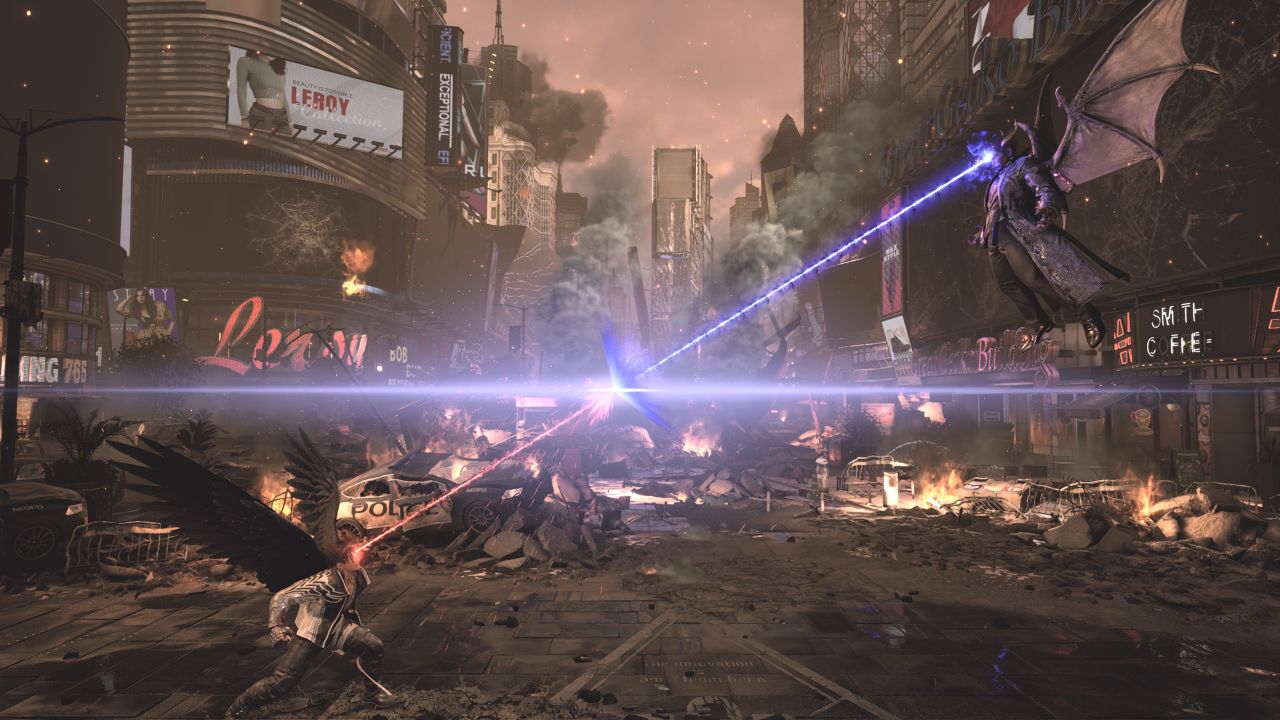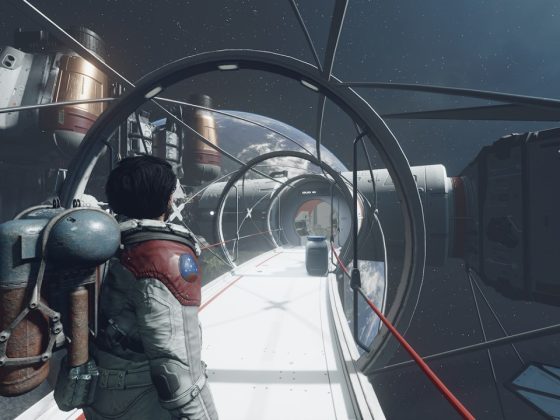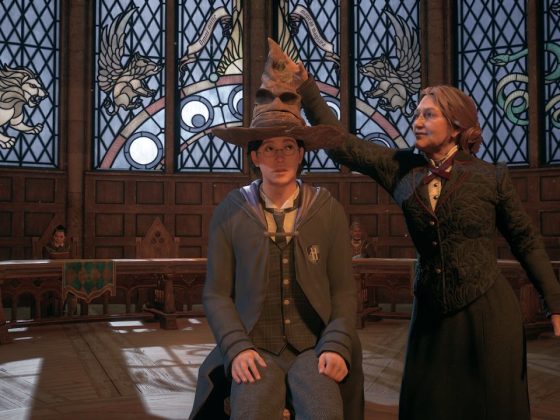Thimbleweed Park is a return to one of the most beloved genres of 1980’s PC gaming… the point-and-click adventure. Like the recently released Yooka-Laylee, this massively successful Kickstarter goes for a nostalgic punch. Thimbleweed Park‘s entire selling point is the idea that (beyond some nice visuals) the game could have easily fallen out of a time machine returning from the year 1987. This great year in adventure gaming also plays hosts to our setting. A mystery town of 81, lowered to 80 after a mysterious death, Thimbleweed Park is full of secrets. It’s the job of our cast of characters to uncover those secrets and solve the murder of the man beneath the bridge. Does Thimbleweed Park remain enjoyable 30 years after the genre all but disappeared?

A Blast from the Past
I grew up playing point-and-click adventure games like Maniac Mansion and Day of the Tentacle, so I felt right at home when I booted up Thimbleweed Park. Maniac Mansion creators Ron Gilbert and Gary Winnick return to their roots, as they also were the creative and programming leads on Thimbleweed Park. It was nice to see the masterminds of my childhood gaming titles back in their element, especially after such a long hiatus.
Thimbleweed Park is a late 80’s point-and-click through and through. Although graphically the game looks a bit updated, everything from the sometimes illogical puzzles to the odd humor still remains. Layered on top of that is 30 years of commentary from Gilbert, smashed into an entertaining and interesting story line.

I actually got into point-and-clicks because of my father’s initial love for PC gaming. He was the person who gave me my copy of Day of the Tentacle, and by proxy, introduced me to Maniac Mansion. I have fond memories playing those games with my father and brothers, and he does too. In fact, he happened to pass by my television as I played through the game. As he stopped and took a double take, he said… “That looks like those old Maniac Mansion games!”. With a smile, I replied “It is, Dad. Same people who made that made this.” For the first time in over 30 years, my father and I experienced a point-and-click adventure together. If anything, Thimbleweed Park deserves a nod for bridging that generational gap.
The Group of Misfits
Although Thimbleweed Park starts with a murder in the old river beneath the bridge, this homicide is hardly the only thing to discover. Like Day of the Tentacle, Thimbleweed Park gives you command over five different characters, all with their own motivations and personal tales to tell. There’s the two federal agents investigating the murder, Ray and Reyes. Both seem to have shady reasons for visiting the quiet town beyond a simple call to duty.

We get the most time with these agents, but the true heart of Thimbleweed Park lay with the three other characters. Ransome the Insult Clown is a cursed performer, forever destined to roam the circus grounds after being bewitched by a local fortune teller. Dolores is a young girl who dreams of becoming a game developer, despite her uncle’s determination for her to take over the family pillow factory outside of town. Finally, there’s Franklin. The deceased father of Dolores, we get to inhabit his spectral form quiet briefly, but long enough to consider him a key player.
These characters are far from the only ones you’ll meet. While Thimbleweed Park isn’t exactly exploding with characters to meet, the ones you come across will certainly be entertaining or provide a laugh. From the expansive Edmund family that Dolores belongs to, all the way down to Leonard the convenience store clerk, each Thimbleweed resident is quirky and odd. The whole tone of the game is often eclectic and weird, with many characters breaking the fourth wall and referring to adventure game design constantly.
Navigating Thimbleweed Park
For those who haven’t played a classic point-and-click adventure game, you might be a bit confused as to how it all plays out. Unlike more modern adventure games like Telltale’s The Walking Dead, Thimbleweed Park is a non-linear experience that encourages exploration and out-of-the-box thinking. As you control one of the five characters, you move around town using a cursor. You have a large assortment of verbs to choose from which allow you to interact with the world around you. For example, if you see an item you want to pick up, simply selecting “Pick Up” and then clicking on that item will put it in your inventory. With this logic, you can probably figure out what “Open”, “Close”, “Push”, “Pull”, and the rest of the verbs can accomplish.

In that way, controls are rather basic and so is exploration. Thimbleweed Park is an interesting place to explore, and it has a really cool vibe to it. Part ghost town, part true American gothic, Thimbleweed Park feels just as retro as the game it plays setting to. You’ll pass boarded up arcades, a newspaper outlet, neon lit diners, and more. This open ended gameplay might be a bit overwhelming for more modern adventure gamers, but old school fans will feel right at home.
This means you’ll be collecting a lot of items, combining them in sometimes ridiculous ways, all to figure out a puzzle’s solution. Several puzzles reminding me of Day of the Tentacle quite a bit, forcing you to use multiple characters in long streams of multi-step puzzles. These long and involved puzzle strings felt great to accomplish, and provided some satisfying “aha!” moments.
A Modern Touch
That’s not to say that Thimbleweed Park isn’t slightly welcoming to newcomers; they manage to add some modern flare without sacrificing the classic formula. When starting the game, you can choose from Casual Mode or Hard Mode. Casual Mode removes some of the more difficult puzzles, and offers a more streamlined version of the game. Hard Mode contains all the puzzles you’d ever want, and provides a rather challenging and often stumping experience. Like classic adventure games, Thimbleweed Park‘s puzzles can often require a bit of thinking and unconventional approaches.

Luckily, the addition of “To-Do Lists” keeps you on task and serves as a great reminder of the current objective(s). Each character has a list in their inventory for quick reference, highlighting the tasks that need to be completed and those that already have. This way, you won’t have to remember every single character’s current progress if you want to explore another character’s story for a while. While all the characters traverse the same town, they’re often wrapped up in their own worlds.
Intelligent Humor
One of Thimbleweed Park‘s biggest strengths is its script. Thimbleweed celebrates what it is, and constantly refers to itself whenever possible. The game’s self awareness isn’t simply used as a platform for jokes, but becomes pretty significant in the story. I won’t spoil anything, but expect some mind blowing moments towards the game’s conclusion. There were some pretty meta moments that were done exceptionally well. Along with the famous “look at the back of the box for Meryl’s number” moment from Metal Gear Solid, as well as the exceptionally intelligent SUPERHOT, Thimbleweed Park contains some of my favorite meta game moments of all time.
It’s not just the self reference and fourth wall breaking that’s entertaining. The entire game is ripe with jokes and chuckle worthy moments, even when it’s not at the expense of the genre or its tropes. Thimbleweed Park loves to poke fun at itself, but also makes for some hilarious moments. I won’t ruin any of the jokes, even though the game is jam packed with them. My personal sense of humor is quite odd as well, which probably came from playing games like this throughout my childhood. It only makes sense then, that Ron Gilbert is one of the only developers who can truly make me laugh aloud.
For the most part, voice acting is good. There’s a few characters who I felt could’ve been performed better, but all of the cast is at least functional. I really enjoyed Dolores and Franklin, both feeling very human. Ray and Reyes were a bit one note, and Ransome could be a bit obnoxious, but as a group the characters make up an excellent team. However, my favorite character in the entire game would have to be Doug, the groundskeeper for the Edmund Mansion. You can often find him simply digging holes in the yard, all while yelling “DIGGIN’!”. Once, I was traversing the mansion’s expansive upper corridor while hearing the familiar cry of “DIGGIN’!”. As I rounded the corner, I was greeted to Doug digging away at the carpet with a hearty “clunk”, only to be met with another dumb grin and a bellowing “DIGGIN’!”.

The Bottom Line on Thimbleweed Park
Thimbleweed Park is not for everyone, nor should it be. In order to truly please fans like myself, some sacrifices had to be made. The point-and-click genre was not without its flaws, but some of those flaws are just as integral to capturing the true spirit of the genre. Puzzles can still be a bit random, but not nearly as obnoxious as they once were. The introduction of objective lists, along with a Casual Mode makes it more inviting to newcomers, but this is still a 1987 point-and-click at its heart.
With an abundance of hilarious dialogue, witty comedy, and fourth wall breaks, Thimbleweed Park cements itself as a worthy entry to be compared to its forefathers. The game will take you anywhere from 4-15 hours, depending on your ability to solve puzzles and your difficulty chosen. Regardless of how long you find yourself in the town of Thimbleweed Park, I can assure you that your stay will be one of oddities and laughter. While not everyone will fully appreciate the immense amount of passion put into this project, every single one of the 17,000 backers to the Kickstarter will definitely be satisfied. To that end, I couldn’t ask for more. I wanted a point-and-click that felt like the ones I played in my childhood, and boy did Gilbert and crew deliver. Newcomers approach with caution, but for me, Thimbleweed Park made me feel like a kid again.
Doug the Diggin’ Groundskeeper for President of the World.





